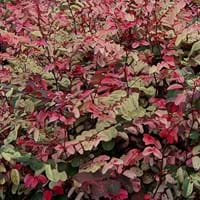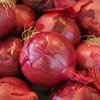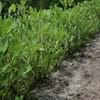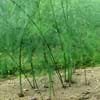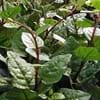Life Span
Perennial
Perennial
Origin
World/Pandemic, North America, Europe, Russia/Siberia, Northern Africa, Asia, India
Melanesia
Types
Not Available
Not available
Number of Varieties
Not Available
Habitat
Cropland, Farms, gardens
Tropical Climate, tropical environments
USDA Hardiness Zone
Not Available
Not Available
AHS Heat Zone
Not Available
12-10
Sunset Zone
A1, A2, A3, H1, H2, 1a, 1b, 2a, 2b, 3a, 3b, 4, 5, 6, 7, 8, 9, 10, 11, 12, 13, 14, 15, 16, 17, 18, 19, 20, 21, 22, 23, 24
H2, 22, 23, 24
Habit
Upright/Erect
Oval or Rounded
Flower Color
White, Yellow green
Green
Flower Color Modifier
Bicolor
Not Available
Fruit Color
Not Available
Red
Leaf Color in Spring
Not Available
White, Green, Light Green, Ivory
Leaf Color in Summer
Green, Gray Green
White, Green, Light Green, Ivory
Leaf Color in Fall
Green, Gray Green, Yellow green
White, Green, Light Green, Ivory
Leaf Color in Winter
Not Available
White, Green, Light Green, Ivory
Leaf Shape
Linear
Elliptic
Plant Season
Not Available
Spring, Summer, Winter
Sunlight
Full Sun, Partial Sun
Full Sun, Partial Sun, Partial shade
Type of Soil
Loam, Sand
Loam
The pH of Soil
Neutral
Acidic, Neutral, Alkaline
Soil Drainage
Well drained
Well drained
Bloom Time
Late Spring, Early Summer
Summer
Tolerances
Drought
Drought
Where to Plant?
Ground, Pot
Ground, Pot
How to Plant?
Seedlings, Sets
Cuttings, Divison, Seedlings, Suckers
Plant Maintenance
Medium
Medium
Watering Requirements
Keep the ground moist but not water-logged, Requires a lot of watering, Water twice a day in the initial period
Medium
In Summer
Lots of watering
Lots of watering
In Spring
Moderate
Moderate
In Winter
Average Water
Average Water
Soil pH
Neutral
Acidic, Neutral, Alkaline
Soil Type
Loam, Sand
Loam
Soil Drainage Capacity
Well drained
Well drained
Sun Exposure
Full Sun, Partial Sun
Full Sun, Partial Sun, Partial shade
Pruning
Remove damaged leaves, Remove dead branches, Remove dead leaves
Remove damaged leaves, Remove dead branches, Remove dead leaves
Fertilizers
All-Purpose Liquid Fertilizer
slow-release fertilizers
Pests and Diseases
Red blotch
Red blotch
Plant Tolerance
Drought
Drought
Flower Petal Number
Single
Single
Fragrant Bark/Stem
Yes
No
Foliage Texture
Medium
Medium
Foliage Sheen
Matte
Matte
Attracts
Not Available
Birds, Butterflies, Not Available
Allergy
no allergic reactions
Not Available
Aesthetic Uses
Not Used For Aesthetic Purpose
Beautification, Cottage Garden, Ground Cover
Beauty Benefits
Not Available
Not Available
Environmental Uses
Air purification
Air purification
Medicinal Uses
Asthma, Bronchitis, cholesterol-lowering, Cough, Diabetes, Digestion problems, Diuretic, High blood pressure
antimicrobial
Part of Plant Used
Whole plant
Leaves
Other Uses
Culinary use
Traditional medicine, Used as Ornamental plant
Used As Indoor Plant
Yes
Yes
Used As Outdoor Plant
Yes
Yes
Garden Design
Edible, Herb / Vegetable
Container, Feature Plant, Hedges, Houseplant, Mixed Border, Tropical
Botanical Name
ALLIUM cepa 'Burgundy'
BREYNIA disticha
Common Name
Garden Onion, Red Onion
Snow Bush
In Hindi
लाल प्याज
बर्फ बुश
In German
Rote Zwiebel
Schnee Bush
In French
Oignon rouge
neige Bush
In Spanish
Cebolla roja
nieve Bush
In Greek
Κόκκινο κρεμμύδι
χιόνι Μπους
In Portuguese
Cebola vermelha
neve de Bush
In Polish
Czerwona cebula
Śnieg Bush
In Latin
Red Cepa
Aequaliter Nubila Bush
Phylum
Magnoliophyta
Magnoliophyta
Class
Liliopsida
Magnoliopsida
Order
Liliales
Euphorbiales
Family
Liliaceae
Euphorbiaceae
Clade
Angiosperms, Monocots
Angiosperms, Eudicots, Rosids
Tribe
Not Available
Phyllantheae
Subfamily
Allioideae
Antidesmatoideae
Number of Species
Not Available
Importance of Red Onion and Snow Bush
Want to have the most appropriate plant for your garden? You might want to know the importance of Red Onion and Snow Bush. Basically, these two plants vary in many aspects. Compare Red Onion and Snow Bush as they differ in many characteristics such as their life, care, benefits, facts, etc. Every gardener must at least have the slightest clue about the plants he wants to plant in his garden. Compare their benefits, which differ in many ways like facts and uses. The medicinal use of Red Onion is Asthma, Bronchitis, cholesterol-lowering, Cough, Diabetes, Digestion problems, Diuretic and High blood pressure whereas of Snow Bush is antimicrobial. Red Onion has beauty benefits as follows: Not Available while Snow Bush has beauty benefits as follows: Not Available.
Compare Facts of Red Onion vs Snow Bush
How to choose the best garden plant for your garden depending upon its facts? Here garden plant comparison will help you to solve this query. Compare the facts of Red Onion vs Snow Bush and know which one to choose. As garden plants have benefits and other uses, allergy is also a major drawback of plants for some people. Allergic reactions of Red Onion are no allergic reactions whereas of Snow Bush have Not Available respectively. Having a fruit bearing plant in your garden can be a plus point of your garden. Red Onion has no showy fruits and Snow Bush has no showy fruits. Also Red Onion is not flowering and Snow Bush is not flowering . You can compare Red Onion and Snow Bush facts and facts of other plants too.

